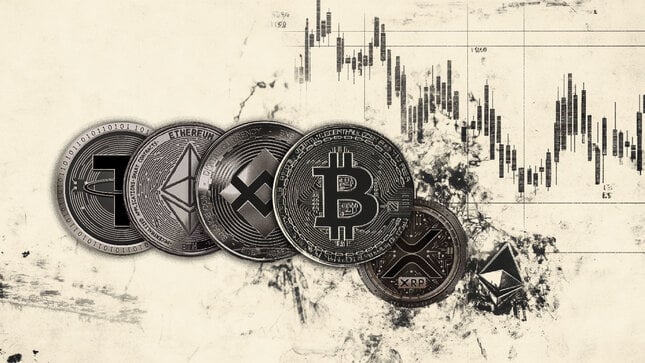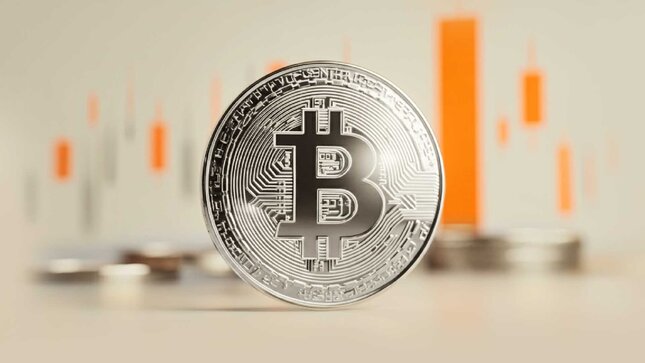SP 500 Exchange rate
Editors’ Picks

EUR/USD: Gains remain capped below 1.1800
EUR/USD consolidates its upside below 1.1800 in the European trading hours on Monday. The pair trades listlessly amid a tepid market mood, despite a broadly subdued US Dollar. Mid-tier US Pending Home Sales are next in focus.

GBP/USD hovers around 1.3500 amid cautious markets
GBP/USD is oscillating around 1.3500 in the European session on Monday, supported by broad US Dollar softness. But the upside appears limited due to thin market conditions heading into the New Year holiday break.

Gold corrects from record high as profit-taking sets in
Gold price retreats from a record high near $4,550 in European trading on Monday as traders book some profits ahead of holidays. If the US Dollar finds renewed demand, it could also weigh on the precious metal, as it makes Gold more expensive for non-US buyers.

Bitcoin, Ethereum, and XRP bulls regain strength
Bitcoin, Ethereum, and Ripple record roughly 3% gains on Monday, regaining strength mid-holiday season. Despite thin liquidity in the holiday season, BTC and major altcoins are regaining strength as US President Donald Trump pushes peace talks between Russia and Ukraine. The technical outlook for Bitcoin, Ethereum, and Ripple gradually shifts bullish as selling pressure wanes.

Bitcoin Price Annual Forecast: BTC holds long-term bullish structure heading into 2026
Bitcoin (BTC) is wrapping up 2025 as one of its most eventful years, defined by unprecedented institutional participation, major regulatory developments, and extreme price volatility.
Majors
Cryptocurrencies
Signatures
S&P 500
The Standard & Poor's 500 (S&P 500) is a stock market index tracking the stock performance of 500 of the largest companies listed on stock exchanges in the United States (US). It is seen as a leading indicator of US equities and includes approximately 80% of the total market capitalization of US public companies.
The S&P 500, operated by S&P Dow Jones Indices, is weighted by free-float market capitalization, meaning that larger companies have a greater impact on the index. Constituents and their weights are regularly updated based on rules set by S&P Dow Jones Indices.
The S&P Index Committee, comprising analysts and economists at Standard & Poor's, selects the companies based on criteria such as market size, liquidity, and industry grouping.
Over time, the S&P 500 serves as a key benchmark for the US economy.
HISTORIC HIGHS AND LOWS FOR S&P 500
- All-time records: Max: 6,001.35 on 11/11/2024 – Min: 4.40 on 05/1932
- Last 5 years: Max: 6,001.35 on 11/11/2024 – Min: 2,237.40 on 23/03/2020
* Data as of November 2024
ASSETS THAT INFLUENCE THE S&P 500
- Currencies: US Dollar (USD).
- Commodities: Oil and Gold.
- Bonds: US Treasury Bonds.
ORGANIZATIONS, PEOPLE, AND ECONOMIC DATA THAT INFLUENCE THE S&P 500
Since the S&P 500 is a benchmark of US stocks, its value is influenced by a variety of decisions and indicators affecting major companies, including:
- Economic indicators inflation – Consumer Price Index (CPI) and Producer Price Index (PPI) –, consumer confidence (University of Michigan Consumer Sentiment Index), economic growth (GDP), employment (Nonfarm Payrolls), and salaries (Average Weekly Earnings).
- Interest rates, decided by the Federal Reserve (Fed), the central banking system of the US. Jerome Powell, the 16th Chair of the Fed, has held the position since February 2018 after being nominated by Donald Trump and confirmed by the Senate.
- Fiscal policy, trade deals, and business laws decided by the US president, the Treasury Department and the Department of Commerce. The Treasury focuses on fostering economic stability, growth and financial integrity, while the Department of Commerce supports economic growth and established industrial standards.
- Energy prices such as electricity and Oil directly impact production costs for companies within the S&P 500.